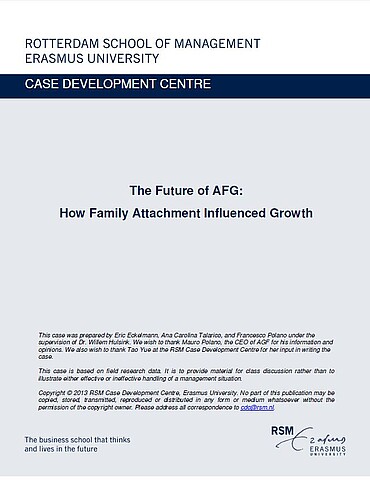Citation Note
Based on Field research; 18 pages.
Follow the 'handle' link to access the Case Study on RePub.
For EUR staff members: the Teaching Note is available on request, you can contact us at rsm.nl/cdc/contact/
For external users: follow the link to purchase the Case Study and the Teaching Note.
Objective
The case serves two main teaching objectives: 1. To make students understand the characteristics of a family firm – the “mission” of the entrepreneur is often to provide a secure future for his family. Thus, any important decisions would be made by all family members. 2. To make students examine the dilemma common to many entrepreneurs – how should one deal with setbacks when building or growing a company? It is important to see that in many situations, as in this case particularly, there is more than one option to choose from, but none seems to be a perfect solution. How do entrepreneurs cope with this uncertainty, especially when a large investment has already been made? This question tackles the question of sunk costs faced by many companies and managers.
description
The Italian family firm AFG bought a defective plant when it decided to expand business. AFG had three options to resolve the problem but none were ideal – each had its own risks and long-term consequences for the business, as well as the family. Which option was most consistent with AFG’s market and capital position, vision, mission and goals?
Abstract
Abstract. The case deals with a dilemma the Italian family firm AFG faced after making a significant investment to grow its business. AFG had been a successful commercial dealer of food packaging plastics, but under increased competition and squeezed margins, it bought a defective and underperforming extrusion plant to become a manufacturer of plastic packaging for the food industry. AFG had three alternative future plans, each with different consequences and risks for the family, as well as the business.
usage
The case is suitable for bachelor’s or master’s business students in the study of entrepreneurship or family business.
